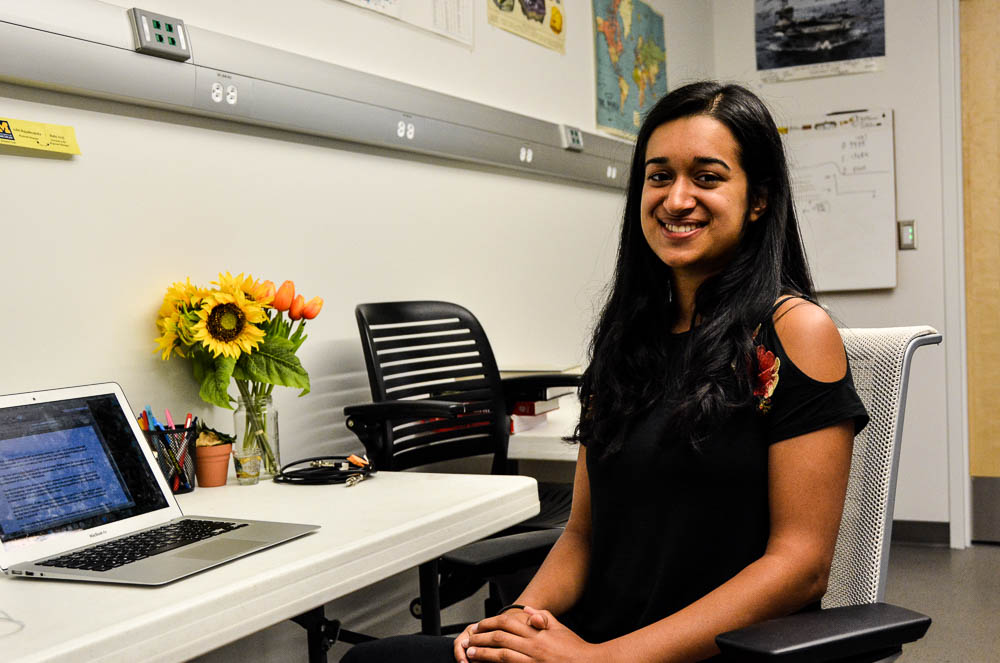By Aditi Rajadhyaksha
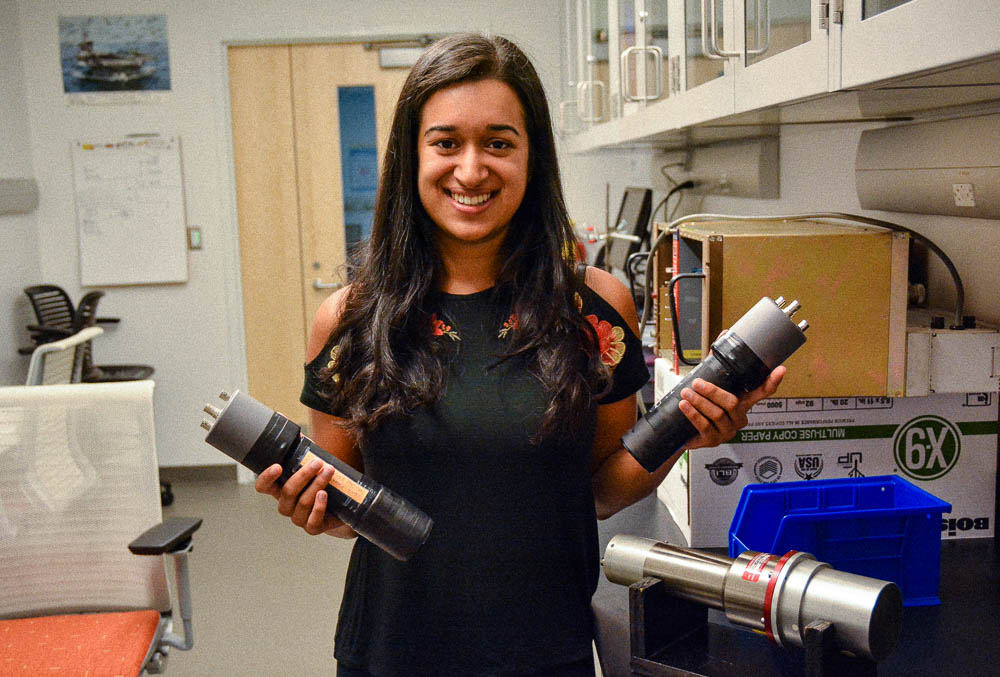
I’m a Computer Science major in the school of Literature, Science, and the Arts. Eleven months ago, I knew nothing about nuclear engineering. In ten days, I’ll be interning at Sandia National Laboratories in Livermore, CA to work on a Helium-3 well counter. You might be wondering how I ended up here- I know that I am.
I was pretty lost at the beginning of the Fall 2016 semester. I had just decided to major in Computer Science, which I was satisfied with. I enjoyed my Computer Science courses, but I felt out of place. I had just been accepted to the UROP program, which I was apprehensive about because I had heard many stories of friends who ended up with terrible UROP projects and even worse mentors. Boy, I had no idea what I was in for.
Fast forward a month and I’m on Professor Sara Pozzi’s project working with Dr. Patricia Schuster. I don’t know a single thing about nuclear engineering, but the field has always intrigued me, so I’m excited about the prospect of this project. Patricia has explained the project to me, and I sort of understand it, but not really. Luckily, I understand the first coding assignment, so I get to work on that.
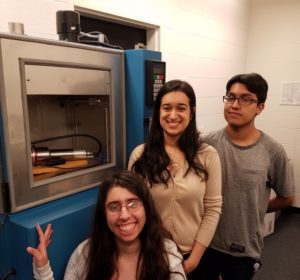
As the months go by, I start understanding more and more of the project and get engaged in the work. I also start to get an idea of the magnitude of the importance of the field of nuclear engineering.
Rewind a week, then a month, then two months… research is hard. Things take time. Things always take longer than you think they will. Things never work the first time, and, if they do, something’s wrong. Some group members start getting frustrated with the pace of progress. Stress starts building. We were supposed to have stilbene data by the ANS Student Conference in April, but that might not happen.
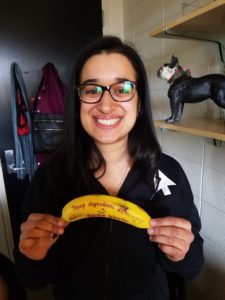
March 24, 2017. The student conference is a month away. We finally take our first measurement of the EJ-309 liquid organic scintillator detector. I’m so excited that I buy Patricia a banana.
At the student conference, I start to realize that I really enjoy this work. I’m beginning to think that this is something I could see myself doing for a long time. I mean, I submitted my data to a Science as Art contest held by the university. So, not only do I enjoy the work, but I think it’s art, too.
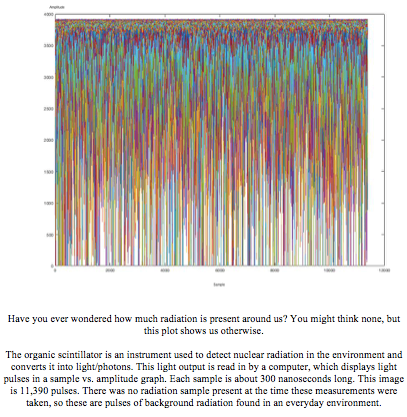
People respond really well to my ANS student conference talk. This tells me that this work is something that I’m good at. I want to start actively pursuing this.
At the conference, two CVT/DNNG upperclassmen, Evan and Kyle, tell me that they will be working at national laboratories this summer. I have heard about these national laboratories- they do amazing work, the best people in nuclear have worked at them, and Patricia did her graduate work at Sandia National Laboratories. Now I want to work at one really badly. My sights are set on it for my summer 2018 internship. Also, I feel like I’ve been robbed of an award for my talk at the conference. Vengeance starts brewing.
In April, I find out that I’ve been accepted as a summer CVT undergraduate fellow. I am ecstatic! I will get to continue working on this project that I have gotten really into. And I will get to continue working with Patricia. And I win an award for the best poster in my session at the UROP symposium. More evidence that I am good at what I am doing and that my passion for it is being conveyed to others.
λλλλλλλλλλλλλλλλλλλλλλλλλλλλλλλλλλλλλλλλλλλλλλλλλ
I started the summer with three goals:
- Take measurements of the stilbene organic scintillator detector.
- Give an award-winning talk at the INMM conference.
- Learn how to drive (this is something that they do not teach you when you grow up in New York City).
My CVT internship began with the MCNP-PoliMi workshop. That was exciting for me because I had never been exposed to MCNP prior to this and had heard a lot about it. I was able to become familiar with the program and meet people that had traveled far distances to Ann Arbor for this workshop.
Throughout the internship, I continued working on my temperature dependence of organic scintillator detectors project. We took measurements of the stilbene organic scintillator detector and a plastic organic scintillator detector along with the EJ-309 liquid organic scintillator detector again. I improved upon and wrote new data analysis scripts in Python.
Then, it was time for the INMM conference! It was an amazing opportunity and an amazing conference. I met a lot of people, exchanged several business cards, and heard a lot of interesting talks. I especially enjoyed hearing some of the policy talks because that’s something I don’t normally get to hear about.
The best was hearing Sieg Hecker’s talk. It was an honor. Hearing about his experiences after the Cold War and hearing him talk about the current state of nuclear policy and weapons showed me the importance of this work. I left inspired.
I spent a lot of time at the national lab exhibits because I have a one-track mind, and that mind was set on getting contacts at national labs in order to secure myself an internship for summer 2018. I also met with some companies that are also doing impressive and groundbreaking work, so those are other places to pursue for next summer.
I presented my work. It was a great experience because I got to hear suggestions and answer questions from audience members and present my work to some CVT and DNNG members for the first time. I was also the only undergraduate presenter from the DNNG and in my session, which I’m proud of.
I met my judge during a social event. I asked him what I did well and how to improve. He told me that I had the best slides by far and that I had the best presentation material. He said that I held myself well on stage and had great poise and public speaking skills. However, he was disappointed that I read from my notes when presenting. He said that he knew that I knew the information and did not need those notes.
This information is invaluable. For the future, I know what I do well, and I know where to improve. Hopefully, next year when I implement the judge’s advice I can win an award!
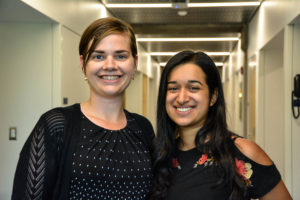
But best of all, Patricia scored me an internship at Sandia National Laboratories starting in August. She introduced me to Dr. Scott Kiff, who, after hearing about the work I did during the year and during my CVT internship, offered me a position to work on his well counter project for five weeks. As you know, this is a dream come true for me. I get to work on a new project at a national lab, learn about well counters, and get a taste for what it would be like to work at Sandia at Livermore. I will get to meet new people there and network and hopefully earn a position there next summer. I also want to obtain some of the new organic glass scintillator material that was just developed there to characterize its temperature dependence. And the best part is that Professor Pozzi agreed to fund me. It really can’t get any better than this.
λλλλλλλλλλλλλλλλλλλλλλλλλλλλλλλλλλλλλλλλλλλλλλλλλ
I was lost at the beginning of this year. And I really didn’t know what I was getting into when I sent that email to Patricia asking to hear about her UROP project. Little did I know it would be a life-changing experience in which I would find my place and my passion.
For so long I’ve had such a hard time finding something that I really enjoy in a place where I feel like I really belong. I spent countless hours trying to come up with a passion for myself when writing my college essays, when selecting my freshman year classes, when pondering potential careers. Today I realize that I have finally found it. I’ve found something that I do well and that I love doing and that I feel passionate about with a group of some of the nicest and smartest people that I have ever met.
I watched my friends take jobs in marketing and finance and at big commercial tech companies and struggled to do the same. Those jobs didn’t appeal to me because they didn’t help anything or anybody. In fact, many of those jobs seem to make life harder for people. I guess it was the altruist that my parents and family raised in me that told me that I didn’t belong in one of those professions doing that work.
But this field is different. As I learned from being at the INMM Conference and listening to Sieg Hecker’s talk, this work matters so much to everybody. The work that I do can help countless people, and has the potential to even save the planet. This makes me feel like I’m doing really important work, which in turn pushes me to work harder and produce better and better work every day.
λλλλλλλλλλλλλλλλλλλλλλλλλλλλλλλλλλλλλλλλλλλλλλλλλ
I started the summer with three goals:
1. Take measurements of the stilbene organic scintillator detector.
2. Give an award-winning talk at the INMM conference.
3. Learn how to drive.
I took measurements of the stilbene organic scintillator detector, and I learned how to drive. I am still working towards winning an award, and I am coming closer every day.
I am very excited to start this new project at Sandia. This will help me work towards my goals of excelling in this field and contributing to the safety of the United States and the world.
At the end of this internship, I know two things for sure: 1. I am the luckiest person in the world. 2. That well counter has no idea what’s coming for it.
λλλλλλλλλλλλλλλλλλλλλλλλλλλλλλλλλλλλλλλλλλλλλλλλλ
Thank you to Patricia Schuster, who has done so much for me. From teaching me everything I know about nuclear engineering, to pushing me to give talks and be a better researcher, to advocating for me to the DNNG and CVT, to getting me the CVT internship, to getting me the position at Sandia, and for being there for me when it gets hard to be a woman in engineering. She has been instrumental in helping me find my passion and my purpose and in making me the researcher, nuclear engineer and data scientist that I am today.
Thank you to my teammates Ricardo Lopez, Mary Intwan, and Ruby Araj. Thank you to Charlie Sosa, Tony Shin, Matthew Marcath and Angela Di Fulvio for help in the lab. Thank you to Professor Sara Pozzi and Dr. Scott Kiff.
Thank you to the CVT, the DNNG, the ANS Student Chapter at the University of Michigan and the INMM Student Chapter at the University of Michigan.
Thank you to Professor Mary-Ann Mycek for telling my dad that I should do UROP. Thank you to my dad for telling me that Mary-Ann said that I should do UROP. And thank you to UROP.
